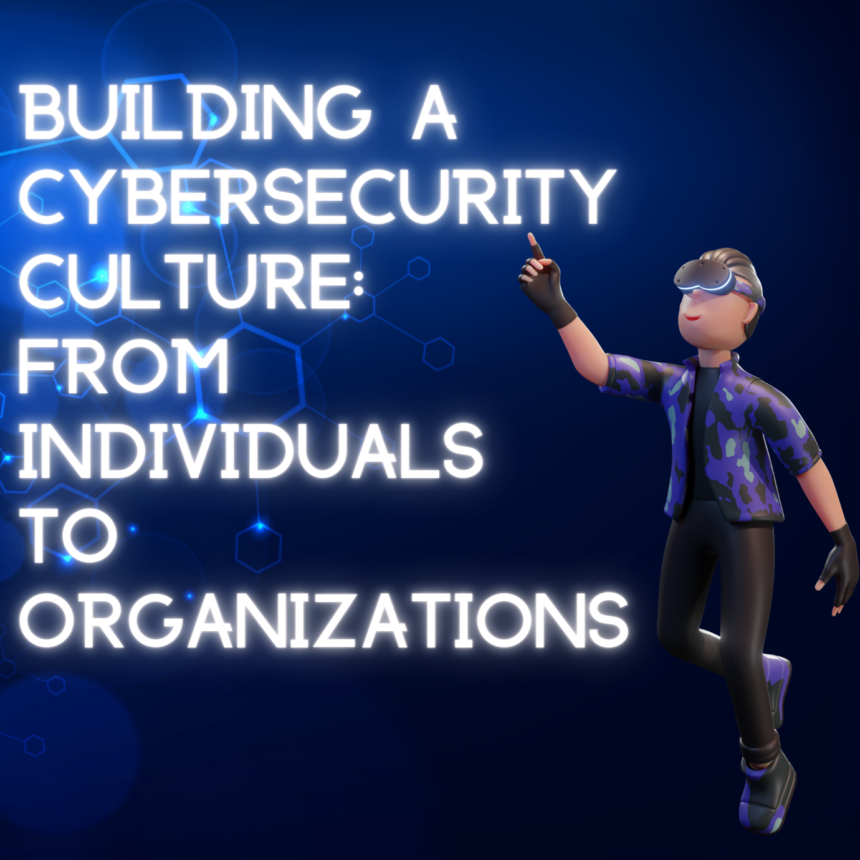In today’s digital landscape, cybersecurity is a shared responsibility that extends beyond the efforts of individual employees or security teams. To effectively protect against cyber threats, organizations must cultivate a cybersecurity culture that permeates every level and department. By fostering a collective commitment to security, organizations can significantly enhance their resilience against evolving cyber risks. Let’s explore the key steps to building a cybersecurity culture:
1. Leadership Commitment: Leadership plays a vital role in establishing a cybersecurity culture. Executives and managers must demonstrate a strong commitment to security by prioritizing cybersecurity initiatives, allocating resources, and setting a positive example through their own security practices.
2. Employee Training and Awareness: Provide comprehensive cybersecurity training to all employees, regardless of their role or technical expertise. Training should cover essential topics such as password hygiene, phishing awareness, safe browsing practices, and incident reporting. Regularly reinforce security best practices through awareness campaigns, newsletters, and simulated phishing exercises.
3. Clear Policies and Procedures: Develop and communicate clear and concise cybersecurity policies and procedures. These should cover acceptable use of technology, password requirements, data handling guidelines, remote work policies, and incident response procedures. Ensure that policies are regularly updated to address emerging threats and comply with industry regulations.
4. Access Controls and Privilege Management: Implement strong access controls and privilege management practices. Employees should be granted the minimum level of access necessary to perform their duties effectively. Regularly review and revoke access rights as employees change roles or leave the organization. Monitor user activity and implement multi-factor authentication for sensitive systems and data.
5. Secure Technology Infrastructure: Maintain a secure technology infrastructure by regularly patching software, updating firmware, and deploying robust security solutions such as firewalls, antivirus software, and intrusion detection systems. Implement secure configurations and conduct vulnerability assessments to identify and address weaknesses in systems and applications.
6. Incident Response Readiness: Establish an incident response plan that outlines the steps to be taken in the event of a security incident. Designate roles and responsibilities, establish communication channels, and regularly test and update the plan to ensure its effectiveness. Encourage employees to report incidents promptly and create a supportive environment that promotes open communication about security concerns.
7. Continuous Monitoring and Threat Intelligence: Implement robust monitoring systems to detect and respond to security incidents in real-time. Leverage threat intelligence sources to stay informed about emerging threats and proactive defense measures. Monitor network traffic, endpoints, and critical systems to identify and mitigate potential security breaches.
8. Collaboration and Partnerships: Foster collaboration within the organization and establish partnerships with industry peers, government agencies, and cybersecurity organizations. Participate in information-sharing initiatives, join industry-specific forums, and collaborate on security research and best practices. Sharing knowledge and experiences strengthens the collective defense against cyber threats.
9. Regular Audits and Assessments: Conduct regular cybersecurity audits and assessments to evaluate the effectiveness of security controls and identify areas for improvement. This includes network penetration testing, vulnerability assessments, and compliance audits. Use the findings to drive continuous improvement and prioritize security investments.
10. Employee Recognition and Rewards: Recognize and reward employees who demonstrate exemplary cybersecurity practices and contribute to the organization’s security culture. This can be done through acknowledgment programs, performance evaluations, or incentives that promote a positive cybersecurity mindset.
By implementing these steps, organizations can build a strong cybersecurity culture that empowers individuals to become active defenders of digital assets. It is an ongoing process that requires continuous education, vigilance, and adaptability to stay ahead of evolving cyber threats. Building a cybersecurity culture is not just about technology; it’s about people, processes, and a shared commitment to safeguarding sensitive information and maintaining a secure digital environment.
